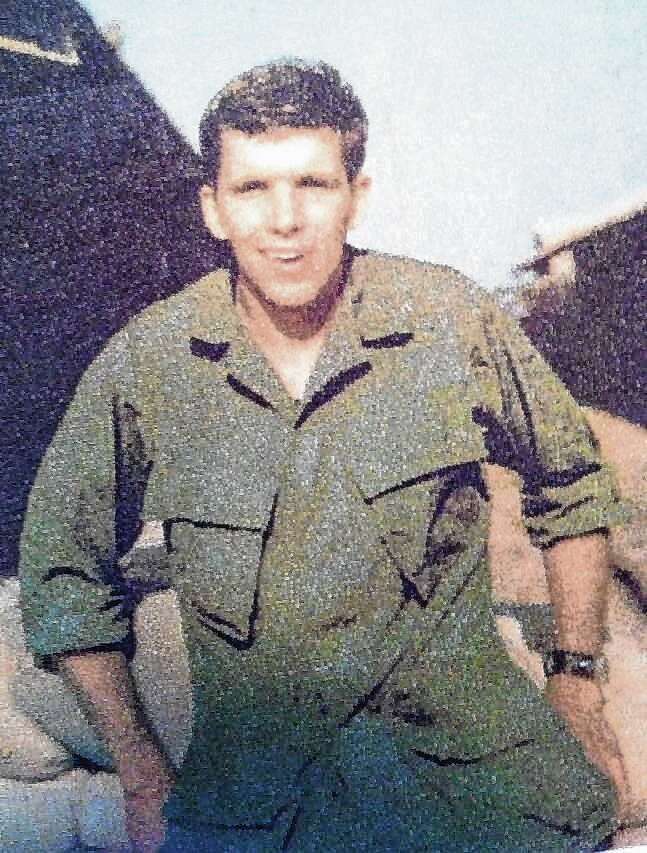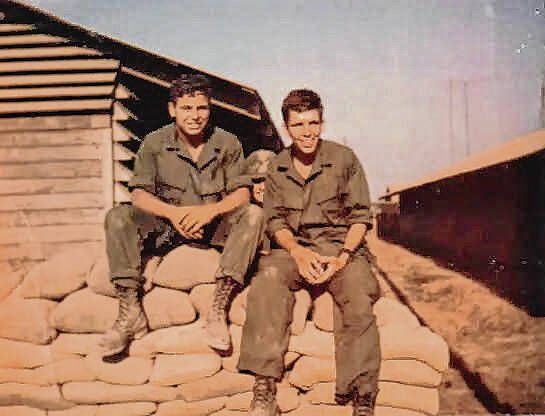By Jim Myers
Guest writer
My initial contact with the 7/1 st Air Cavalry was when I reported for duty and was informed by the headquarters clerk that we were going to Vietnam.
I don’t have the exact date, but I was an early arrival, so likely late April or May 1967. A day or two later, we were called to formation by the first sergeant, where he also informed us that we were going to Vietnam but in much more colorful language.
The next several months involved training with several trips to the field, which included locations on Fort Knox, one or maybe two trips to Fort Campbell, Kentucky, and one trip to Camp Atterbury in Indiana. I was a tech supply specialist with HHT Troop and operated on the upper level of one of the hangars at Godman Field.
Toward the end of 1967, preparations were being made for our travel to Vietnam. This involved loading our equipment into steel containers that were shipped by rail to proceed us. I don’t recall the exact date, but approximately Jan. 21, 1968, we boarded chartered aircraft to go to Long Beach, California.
We carried our M-16s on board with us. This I remember well because the soldier sitting next to me had the window seat, and prior to takeoff, the muzzle of his rifle swung into the inner window pane and broke it. The stewardess looked at and said it would be all right, so off we went.
Upon arrival in Long Beach, California, we were transported to the USNS Upshur. I remember standing in formation on the pier as a large metal gangway was being positioned to allow us to board. All of a sudden, there was a loud, thunderous crash as the gangway came crashing down onto the pier. The gangway was repositioned, and we boarded.
Our sleeping quarters was on one of the lower decks and consisted of cots stacked on metal chains three or four high. Our M-16s hung on the side of the cot and our duffel bags stacked on the floor. Most of our day was standing in line for breakfast, lunch and then dinner.
At some point, after leaving Long Beach, it was determined that several men had brought personal weapons with them and had them within their duffel bags. A couple of young officers were sent to our sleeping area to search for these weapons, which would be returned to the owner upon our arrival in Vietnam.
I still remember the anxiety I had as they searched my bag knowing I had a fifth of whiskey stored there, but although I’m sure they found it, they said nothing. Because of the complete lack of privacy, that bottle remained pretty well untouched for the entire voyage.
Shortly after our departure, we received news that North Korea had captured the USS Pueblo and its crew. The capture took place Jan. 23, 1968, and I still remember the emotion I felt upon hearing that news. It was a combination of anger and confident resolve that if asked, we (7/1st) could go get it back. I was 19 years old at that time and extremely proud of our squadron. I honestly and sincerely felt we could accomplish anything we were asked to do, including taking back the USS Pueblo if ordered to do so.
My fondest memory of the voyage took place one evening sitting on the deck of the ship (no chairs) listening to the sound of the ocean and ship. Two or three NCOs came out with guitars and began to play and sing. There were probably a couple hundred of us sitting Indian style listening to this impromptu concert, and it was beautiful.
We were scheduled to make a stop in Okinawa prior to arriving in Vietnam. Word was passed down that no one would be allowed to leave the ship unless their face matched their military ID. In other words, those of us who were growing facial hair had to shave it off.
Upon arrival, we saw two canteen trucks parked on the pier. Our visit to Okinawa consisted of going down one gangway to the pier and entering the first canteen truck and then into the second canteen truck and then up a second gangway back onto the ship. By the time I was released to go, all that was left on the canteen trucks was a small number of Tootsie Rolls.
The only remaining memory of the voyage over was of the men who got seasick, especially those who had the misfortune of being thrown in the brig. It was not a pretty sight.
After arriving in Vietnam, we were transported to Dĩ An, which was north of Saigon and along one of the trails used by the enemy during the first Tet offensive. My most vivid memory of that time was being part of a night ambush along that trail. We were split into two groups and told it was a free-fire zone, but if we did fire, we would have to come out the next day to look for bodies.
I spent the night wondering if the Claymore mines were facing in the right direction. Our group did not fire, but the other group, which was north of us, did.
Other memories of Dĩ An were seeing agent orange dropped, nighttime flairs, the knowledge of an unmapped mine field left by the French just outside our perimeter and the smell of kerosene incineration of excrement.
While in Dĩ An, some R&R visits were allowed. One of my buddies went to Hong Kong and brought me back binoculars. My uncle was a lieutenant colonel in the Air Force and stationed in Saigon, and I got to go stay with him in his hotel for a couple of days. He worked nights, so in the morning, I would explore.
One morning, he put me in a motorized rickshaw and sent me to the Saigon Zoo. I had looked over most of it when I came upon a refreshment stand with several uniformed South Vietnamese soldiers and young ladies enjoying themselves. I looked at them and they looked at me, and I suddenly had a very uncomfortable feeling.
About that time, a U.S. Army lieutenant and his jeep driver spotted me and motioned me over and asked what in the hell I was doing there, as it was infested with VC. He called my squadron to confirm I was not AWOL and (I think) drove me back to the hotel.
At some point in time, we relocated to Vĩnh Long in the Mekong Delta. During my time there, I continued to function as an expediter for tech supply. This consisted mainly of traveling to other aviation-related base camps and trading for items our crew chiefs needed quickly. I traveled in a ¾-ton truck with a .50-caliber machine gun mounted on the passenger side of the window frame. I also carried a .45-caliber side arm.
My memories of Vĩnh Long consist mostly of travel to other base camps and quite a bit of nighttime perimeter guard duty. I remember having access to starlight scopes for night vision there. I don’t recall having them in Dian.
Nearing the end of my enlistment period, I received word that I was receiving an “early out” so that I could resume my studies at Indiana University. I left Vietnam and the 7/1st Air Cav in late August 1968.
After graduation from IU in 1971, I’ve had a rewarding career and have led a blessed life. In 2016, however, I came down with Parkinson’s disease and bladder cancer, both of which the VA presumes to be caused by exposure to agent orange. I still feel blessed because the cancer is gone (for now) and the Parkinson’s hit me late in life.
At the time I was a member of the 7/1st Air Cavalry, I felt that we were the best squadron in the entire Army and that we could accomplish anything. My service with the 7/1st is a big part of who I am today.
Seymour resident Jim Myers is a U.S. Army veteran who served in Vietnam.




